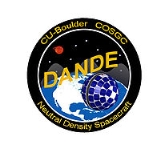
Drag and Atmospheric Neutral Density Explorer
Encyclopedia
DANDE is a 50 kg class spacecraft developed by the University of Colorado at Boulder
was the winner of the 5th iteration of the Air Force Research Laboratory's
University Nanosat Program.
The Drag and Atmospheric Neutral Density Explorer (DANDE) will be a low-cost density, wind, and composition-measuring satellite that will provide data for the calibration and validation of operational models and improve our understanding of the thermosphere.
The spacecraft is being designed and built at the Colorado Space Grant Consortium (COSGC) in collaboration with the University of Colorado at Boulder Aerospace Engineering Sciences department, Air Force Space Command - Space Analysis/A9A, and research faculty at the National Oceanic and Atmospheric Administration (NOAA). This effort is sponsored by the University Nanosat Program at the Air Force Research Laboratories.
University of Colorado at Boulder
The University of Colorado Boulder is a public research university located in Boulder, Colorado...
was the winner of the 5th iteration of the Air Force Research Laboratory's
Air Force Research Laboratory
The Air Force Research Laboratory is a scientific research organization operated by the United States Air Force Materiel Command dedicated to leading the discovery, development, and integration of affordable aerospace warfighting technologies; planning and executing the Air Force science and...
University Nanosat Program.
Science
Drag induced by the neutral-atmosphere density is the major perturbation on satellites in low earth orbit. True density deviates as much as 21% from model predictions, introducing error into crucial government and private space operations with applications to situational awareness, space surveillance, laser communications, re-entry prediction, rendezvous and proximity ops. A need exists to measure physical or 'true' density, quantify density variations, and to provide in-situ model calibration data.The Drag and Atmospheric Neutral Density Explorer (DANDE) will be a low-cost density, wind, and composition-measuring satellite that will provide data for the calibration and validation of operational models and improve our understanding of the thermosphere.
The spacecraft is being designed and built at the Colorado Space Grant Consortium (COSGC) in collaboration with the University of Colorado at Boulder Aerospace Engineering Sciences department, Air Force Space Command - Space Analysis/A9A, and research faculty at the National Oceanic and Atmospheric Administration (NOAA). This effort is sponsored by the University Nanosat Program at the Air Force Research Laboratories.

